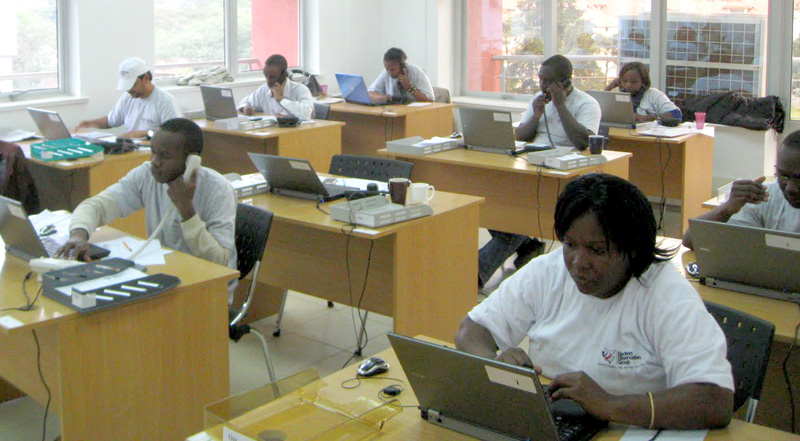Kenyan Citizens Monitor with Mobile aka “A4B2G1H1”*

Detailed information about Election Day can be collected from thousands of observers in many ways given the need for accuracy, speed, minimized costs, and taking into account the particular communications infrastructure and organizational capacity. (Chris Spence wrote previously on this methodology.)
For the Constitutional Referendum in Kenya, the Kenya Election Observation Group (ELOG) built a system which relied on observers using mobile phones and text messages to pass the data on their observation forms to a center multiple times throughout the day. Ahead of Referendum Day, I was lucky enough to travel and assist ELOG in their use of technology, with a focus on supporting their efforts in collecting observer data.
Reliable, consistent information on the rules and regulations of the electoral process is not always a guarantee. For Kenya, two days before the August 4th vote, the electoral commission (IIEC) had yet to clarify its position on mobile phones in the nation’s polling centers. At headquarters of ELOG, their leadership knew that this decision would not prevent ELOG from observing, but would weaken the group’s ability to collect information rapidly, share an accurate assessment of the process by midday, and slow their ability to project the turnout and election results. The worst-case scenario would be a delay on receiving observer information until the end of the counting process, presumably not until all observers were allowed to use their mobile phones. An observer leaving the polling station during the day to use their phone is not a viable option, as their primary responsibility is to witness the voting and counting process.
However, less than 24 hours ahead of polls opening, the anticipated correspondence from the IIEC finally arrived that observers would be able to keep their mobile phones, but they “must be on silent mode and they can only be used to send text messages.”
With that decision, and communication to the majority of polling officers not to confiscate phones, ELOG observers were able to report on the results of their monitoring activities at five pre-scheduled times throughout the day. The ELOG Information Center in Nairobi (image above), received 4750 text messages from observers to their short code, which resulted in the collection of 99% of the observation data in their statistical sample.
With the observer reports on the quality of the voting process and the results of the final tally in their individual station, ELOG was able to build confidence in the validity of the exercise, and to project the national results at a high level of accuracy (low margin of error).
*
A = "How many polling officials were present?" (Answers 1-10)
B = "Were you refused permission to observe?" (Answers Yes=1, No=2)
G = "Was the stream set up so voters could mark their ballots in secret?" (Answers Yes=1, No=2)
H = "Was the ballot box shown to be empty before being sealed?" (Answers Yes=1, No=2)
